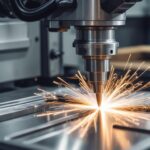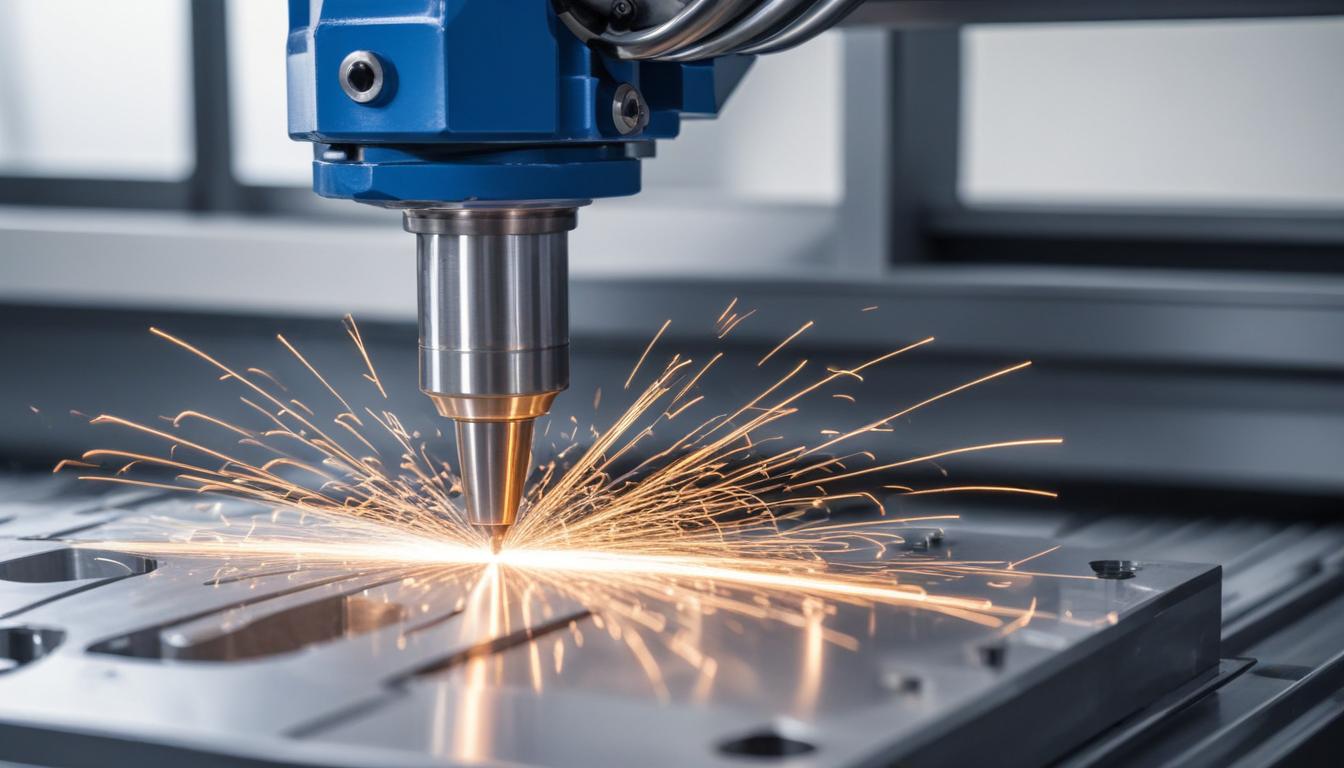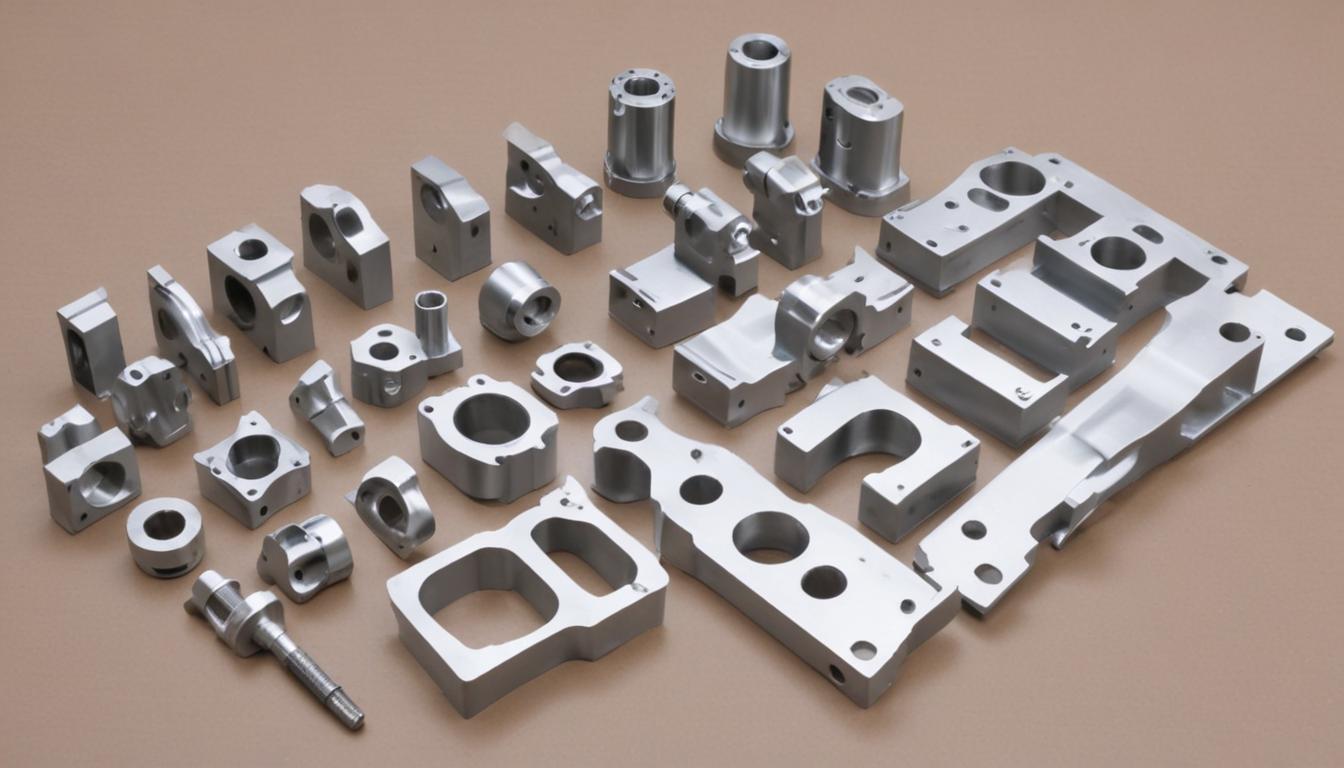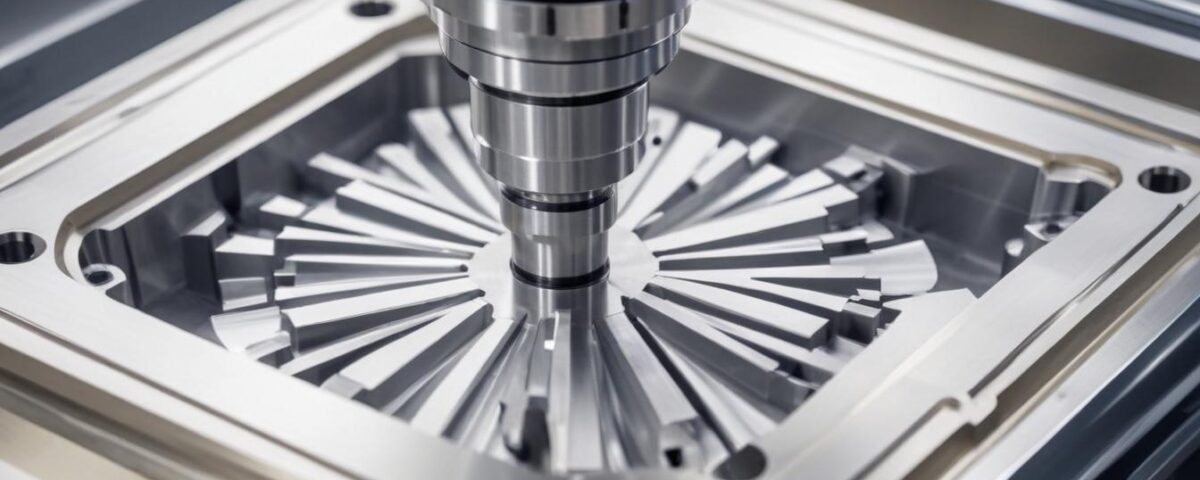
How Contract Machining Can Boost Your CNC Machining Business
18 October 2024
Why Polyester Coating for Metal is Essential in CNC Machining Processes
25 October 2024In today’s highly competitive manufacturing landscape, the efficiency of fabrication processes plays a crucial role in determining the success and profitability of companies. Fabrication, the process of cutting, shaping, and assembling materials into finished products, is the backbone of industries like automotive, aerospace, electronics, and more. Modern manufacturing demands a combination of speed, precision, and cost-effectiveness, pushing industries to continuously improve their processes. Whether it’s mass production or customized, small-batch manufacturing, optimizing fabrication processes can lead to significant gains in output, quality, and material savings.
This is where CNC (Computer Numerical Control) machining steps in as a game-changer. CNC machining has revolutionized manufacturing by automating and refining the fabrication process. By utilizing computerized controls and advanced software, CNC machines can precisely cut, drill, mill, and shape materials into highly complex components with minimal human intervention. The role of CNC machining in today’s industry is pivotal, as it offers manufacturers the tools to optimize fabrication processes, reduce errors, cut down production times, and lower material waste.
Understanding CNC Machining

What is CNC (Computer Numerical Control) Machining?
CNC (Computer Numerical Control) machining is a manufacturing process where pre-programmed computer software controls the movement of machinery and tools. Unlike manual machining, CNC machines execute commands based on digital files that dictate precise actions to shape materials like metal, plastic, wood, or composites. These commands guide various cutting, drilling, and shaping processes to create highly detailed and accurate components. CNC machining allows for consistent and repeatable production, enabling manufacturers to achieve precision at scales that would be impossible with traditional manual methods.
Basic Components and Mechanics of CNC Machines
A typical CNC machine consists of several key components, each contributing to its accuracy and functionality. The machine frame provides stability, while motors and actuators drive the motion of tools along multiple axes—usually three to five, depending on the complexity of the machine. The spindle, responsible for rotating the cutting tool, can operate at high speeds to ensure smooth and precise cuts. CNC machines also rely on control systems that interpret the digital designs, usually in the form of G-code, and translate them into the necessary movements and adjustments. The workpiece is mounted on a table or chuck, and the cutting tools shape it according to the program’s instructions.
Types of CNC Machines: Milling, Turning, Lathes, etc.
CNC machining encompasses a variety of machine types, each designed for specific tasks:
-
CNC Milling Machines: Milling machines use rotating cutting tools to remove material from a workpiece. These machines are excellent for creating complex shapes, pockets, slots, and intricate contours. Multi-axis CNC mills allow for even greater flexibility and precision in cutting.
-
CNC Lathes: Lathes rotate the workpiece while a stationary cutting tool shapes it. CNC lathes are ideal for producing cylindrical parts, such as shafts and pipes, and are widely used in industries like automotive and aerospace.
-
CNC Turning Centers: Similar to lathes, turning centers focus on producing rotational parts, but they often include additional functionalities like drilling, milling, and tapping, all in one machine. This versatility reduces the need for multiple setups and machines.
-
CNC Plasma and Laser Cutters: These machines use plasma or laser beams to cut through materials like metal, plastics, and wood with extreme precision. They are especially useful for sheet metal fabrication and intricate design work.
CNC's Evolution in Manufacturing and Fabrication
CNC machining has come a long way since its inception in the mid-20th century. Early machines were rudimentary and often used punched tape to direct operations. However, as computing power advanced, CNC machines became more sophisticated, incorporating digital controls and software integration. Today, CNC systems are capable of executing highly complex operations with minimal human intervention, allowing for mass customization, rapid prototyping, and even real-time adjustments. This evolution has not only increased production speeds and precision but also opened new possibilities for innovation in fabrication, enabling industries to push the boundaries of design and manufacturing.
The Significance of Fabrication Process Optimization
Definition and Objectives of Process Optimization in Fabrication
Fabrication process optimization refers to the systematic improvement of manufacturing procedures to achieve maximum efficiency, cost-effectiveness, and quality. In today’s competitive market, the ability to streamline operations is crucial for manufacturers looking to enhance productivity and reduce waste. Optimization focuses on improving every aspect of the fabrication process, from raw material handling and machine operation to workflow management and quality control. The primary objective is to create a seamless, error-free production line that not only meets high precision standards but also minimizes lead times and operational costs.
The goals of optimization are multi-faceted:
- Maximize throughput: Produce as many parts as possible within a given time frame without compromising quality.
- Minimize waste: Efficiently use materials and resources to reduce excess and unnecessary costs.
- Ensure consistency and quality: Maintain uniformity in every unit produced, ensuring it meets design specifications and industry standards.
- Reduce downtime: Improve machine utilization and reduce delays from equipment maintenance or changeovers.
- Enhance flexibility: Enable the system to handle both large-scale and small-scale production while maintaining high efficiency.
Key Factors in Optimizing Manufacturing Processes: Time, Cost, and Quality
-
Time Efficiency: Time is one of the most critical factors in any manufacturing environment. Delays or inefficiencies in one stage of fabrication can cause bottlenecks in subsequent stages, leading to longer production cycles and missed deadlines. CNC machining, with its speed and automation, plays a key role in reducing cycle times by allowing for simultaneous or multi-step operations that save considerable time over manual machining. Fast turnaround times mean faster delivery to clients and increased capacity for new orders.
-
Cost Control: Optimizing fabrication processes is essential for controlling operational costs. Material waste, excessive energy consumption, and inefficient labor utilization all contribute to higher production costs. CNC machining helps reduce waste by using precise cutting paths and advanced software to optimize material usage. It also reduces labor costs by minimizing the need for manual intervention and supervision, freeing up skilled workers for other tasks. Additionally, CNC machines improve cost predictability, as they reduce errors that could otherwise lead to rework or scrapped parts.
-
Quality Assurance: High-quality outputs are a vital aspect of any fabrication process. The more consistent the quality of manufactured parts, the fewer issues arise downstream. CNC machines offer an unmatched level of accuracy, allowing manufacturers to produce complex, intricate designs repeatedly without deviating from original specifications. Consistency in quality ensures fewer defects, which in turn leads to greater customer satisfaction, reduced warranty claims, and lower inspection or rework costs.
Benefits of a Streamlined Fabrication Process
A streamlined fabrication process offers numerous advantages, transforming manufacturing operations in significant ways:
-
Improved Productivity: With optimized workflows, machines operate more efficiently, reducing idle time and enhancing output. CNC automation also allows for continuous production without the need for constant human supervision, increasing productivity even during non-working hours.
-
Cost Savings: A lean fabrication process helps businesses minimize unnecessary expenses by optimizing resource utilization. CNC machines help reduce scrap and waste, lower labor costs, and cut down on energy consumption, leading to significant savings over time.
-
Shortened Lead Times: Faster, more efficient processes mean shorter lead times for production runs. This allows manufacturers to respond more quickly to customer demands, improving competitiveness and customer satisfaction.
-
Enhanced Flexibility: CNC machines enable manufacturers to switch between jobs or adjust designs quickly, which is essential in today’s fast-paced manufacturing environment. Whether producing one-off custom parts or large-volume orders, CNC technology supports a flexible and adaptive approach.
-
Better Quality Control: Streamlined processes make it easier to monitor and maintain product quality. CNC’s precision and automation reduce variability in production, ensuring consistent, high-quality results with each batch. This leads to fewer defects, reduced need for rework, and improved overall product reliability.
How CNC Machining Optimizes Fabrication Processes

1. Precision and Accuracy
One of the standout features of CNC machining is its ability to execute highly complex designs with remarkable precision and accuracy. CNC machines use computer-controlled movements, which allow for extremely detailed operations, from cutting intricate shapes to drilling precise holes. This level of accuracy is essential for industries where even the smallest error could lead to significant problems, such as aerospace, medical device manufacturing, and electronics.
By automating the cutting, drilling, and milling processes, CNC machining minimizes human error, ensuring consistency and repeatability in every production cycle. Unlike manual machining, where even experienced operators might introduce variations, CNC machines follow the exact specifications set by the digital design files, producing parts with exact tolerances. This precision is especially valuable in industries that require high-performance components with tight tolerances, such as engine parts in the automotive sector or surgical tools in healthcare.
Case Studies/Examples:
- Aerospace Industry: CNC machines are used to manufacture turbine blades, complex engine components, and aerospace fasteners, all requiring extreme precision and adherence to design tolerances.
- Medical Devices: CNC machining is critical in producing precise medical implants, prosthetics, and surgical instruments where even the smallest deviation from specifications could impact functionality or patient safety.
2. Speed and Efficiency
CNC machines significantly enhance production speed, allowing manufacturers to complete tasks in a fraction of the time compared to manual machining. Since the entire process is automated and pre-programmed, CNC machines can run continuously, producing parts around the clock with minimal downtime. This capability is particularly advantageous for large-scale production, where meeting tight deadlines and reducing cycle times are crucial.
Automation plays a key role in minimizing downtime. CNC machines are equipped with sensors and diagnostic tools that monitor performance and detect issues before they lead to major breakdowns. Furthermore, the ability of CNC machines to perform multiple tasks—such as cutting, drilling, and milling—within a single setup reduces the need for manual intervention and tool changes, speeding up the entire fabrication process.
Multi-tasking Capabilities: Modern CNC machines often feature multi-axis systems that can perform several operations simultaneously. For example, a CNC turning center might mill, bore, and thread a part in a single setup, which eliminates the need for multiple machines or setups. This multi-tasking ability drastically reduces production times and increases output rates, making CNC an ideal solution for high-volume production.
3. Material Waste Reduction
CNC machining plays a critical role in lean manufacturing principles by reducing material waste and maximizing resource efficiency. Traditional machining methods often result in significant material waste, as they rely on rough estimates and manual cuts that can lead to excess material removal. CNC machining, however, utilizes highly accurate computer-guided paths to optimize material use.
CNC software, such as CAD/CAM programs, allows engineers to precisely design cutting paths, ensuring that the machine only removes the material necessary for the desired shape. This not only minimizes scrap but also conserves valuable materials, reducing overall production costs.
Additionally, CNC systems can be programmed to reuse leftover materials for smaller parts or alternate applications, further enhancing material efficiency. This optimization of resources is particularly important in industries that work with expensive materials, such as titanium or carbon composites.
How Material Waste Reduction Lowers Costs: By reducing material waste, CNC machining directly impacts cost savings. Less scrap means fewer raw materials need to be purchased, and any reduction in material use translates to lower overall expenses. In industries like aerospace or electronics, where raw materials can be extremely costly, this reduction in waste is a significant financial benefit.
4. Customization and Flexibility
CNC machining is renowned for its versatility and flexibility, allowing manufacturers to produce customized parts efficiently without needing to reconfigure machinery or perform time-consuming setups. The digital nature of CNC programming means that changing designs is as simple as updating the software code, which allows manufacturers to switch between different parts or designs quickly.
This adaptability is particularly valuable for industries that require rapid prototyping or small batch production. Whether creating a single prototype or manufacturing a limited run of custom parts, CNC machines can handle a wide variety of materials and designs without sacrificing precision or efficiency. This makes CNC machining ideal for industries like medical devices, where each product might need to be tailored to an individual’s unique specifications, or in product development where rapid iterations of a design are essential.
Benefits for Prototyping and Small Batch Productions: CNC’s ability to produce prototypes rapidly enables manufacturers to test and refine designs more quickly, speeding up the development cycle. This is particularly advantageous in industries like consumer electronics or automotive, where rapid innovation is key. Additionally, CNC machines are perfect for producing small batch runs of customized parts, allowing businesses to cater to niche markets or offer personalized products without the high overhead costs associated with traditional machining methods.
Integration of CNC Machining with Advanced Technologies
1. CAD and CAM Software
The integration of CAD (Computer-Aided Design) and CAM (Computer-Aided Manufacturing) software with CNC machining has transformed the way manufacturers design and produce parts. CAD software allows engineers and designers to create detailed, 3D models of parts, while CAM software translates these models into precise instructions for CNC machines to follow. This seamless integration between design and manufacturing stages significantly enhances the efficiency of the fabrication process.
Relationship Between CNC Machining and CAD/CAM Software: CAD and CAM software work together to streamline the production workflow. After a designer creates a part in CAD, the CAM system takes over by converting the digital model into machine-readable code (typically G-code) that instructs the CNC machine on how to manufacture the part. This eliminates the need for manual programming and ensures that the machine follows the exact specifications laid out in the digital design.
How Software-Driven Design Speeds Up the Optimization Process: By automating the translation of designs into manufacturing instructions, CAD/CAM software speeds up the optimization process. Designers can experiment with various configurations, run simulations, and adjust parameters without having to retool or manually program CNC machines. This level of flexibility enables rapid prototyping and design iterations, allowing manufacturers to bring products to market faster. Additionally, software tools enable better material usage by optimizing cutting paths, further reducing waste and improving overall process efficiency.
Improving Design Accuracy and Communication: CAD/CAM software improves design accuracy by providing tools to analyze and refine designs before they reach the CNC machine. Features like real-time simulation, tolerance checks, and stress analysis ensure that designs are optimized for manufacturability. Moreover, the use of a shared digital platform between design and manufacturing teams improves communication, reducing the risk of errors due to misinterpretation of designs. This fosters collaboration, allowing engineers and machinists to work closely on refining the fabrication process.
2. AI and Machine Learning in CNC Machining
The incorporation of Artificial Intelligence (AI) and Machine Learning (ML) in CNC machining is paving the way for smarter, more autonomous manufacturing systems. AI and ML algorithms can analyze large volumes of production data to identify patterns, predict potential issues, and make real-time adjustments to optimize fabrication processes.
The Future Role of AI and Machine Learning in Process Optimization: AI and ML technologies have the potential to revolutionize CNC machining by enabling systems to "learn" from past operations. These systems can detect inefficiencies, predict machine failures, and recommend adjustments to optimize tool paths, feed rates, or material use. With AI-driven automation, manufacturers can further reduce human intervention, minimizing errors and improving consistency across production runs. AI systems will also make it possible to dynamically adjust CNC machine operations based on real-time data, adapting to changes in material properties or environmental conditions.
Predictive Maintenance and Its Impact on Fabrication Uptime: One of the most promising applications of AI in CNC machining is predictive maintenance. AI-powered systems can monitor CNC machines in real time, detecting early signs of wear or malfunction and scheduling maintenance before a breakdown occurs. This reduces unexpected downtime, maximizes machine availability, and increases production efficiency. Predictive maintenance not only extends the lifespan of CNC equipment but also prevents costly delays caused by sudden failures.
3. 3D Printing and CNC Hybrid Solutions
3D Printing, or additive manufacturing, and CNC machining have traditionally been viewed as separate technologies—one focused on building parts layer by layer, and the other on removing material to shape a part. However, the combination of these two technologies is now giving rise to hybrid manufacturing systems that leverage the strengths of both methods.
Combining CNC Machining with Additive Manufacturing for Process Enhancement: Hybrid manufacturing machines combine the capabilities of 3D printing and CNC machining in a single system, enabling manufacturers to create complex parts more efficiently. For example, a hybrid machine can use 3D printing to add material to a part and then use CNC machining to refine the surface or cut precise features into the component. This dual approach offers the best of both worlds—CNC’s precision and additive manufacturing’s ability to create complex geometries.
Advantages of Hybrid Approaches in Complex or Multi-Step Fabrications: In complex or multi-step fabrication processes, hybrid solutions offer significant time and cost savings by eliminating the need to move a part between separate 3D printers and CNC machines. These systems also enable manufacturers to build parts that were previously difficult or impossible to produce using traditional methods, such as components with internal channels, overhangs, or complex lattice structures. Hybrid machines also make it easier to repair or modify existing parts by adding material only where needed and then finishing the surface with CNC machining.
The Growing Trend of Hybrid Machines and How They Optimize Workflows: As the demand for complex, high-performance parts grows, hybrid machines are becoming increasingly popular in industries such as aerospace, automotive, and medical device manufacturing. These systems optimize workflows by reducing setup times, minimizing material handling, and allowing for seamless transitions between additive and subtractive processes. By combining the best aspects of CNC machining and 3D printing, hybrid solutions provide manufacturers with a versatile and efficient tool for fabricating parts in less time and with greater precision.
Challenges in CNC Process Optimization
1. Initial Costs and Implementation
The Investment Required for CNC Technology: One of the primary challenges in adopting CNC machining for fabrication process optimization is the significant upfront investment. CNC machines, especially advanced multi-axis models with integrated AI or hybrid capabilities, come with a hefty price tag. Beyond the cost of the machines themselves, businesses must also consider expenses related to installation, software integration (such as CAD/CAM systems), and workspace modifications required to accommodate CNC equipment. These factors can be a financial hurdle for smaller businesses or companies looking to transition from manual machining to automation.
Balancing Cost vs. Benefit Over Time: Despite the high initial costs, the long-term benefits of CNC machining often outweigh the investment. Businesses can reduce labor costs, minimize material waste, increase production speed, and improve part quality. The key to balancing the cost versus benefit equation lies in identifying areas where CNC machining can deliver the greatest value—such as reducing rework, eliminating defects, or cutting down lead times. Over time, companies can realize significant savings, as well as enhanced competitiveness due to better process optimization.
2. Skilled Workforce and Training
The Need for Skilled Operators and Programmers: Although CNC machines are highly automated, they still require skilled operators and programmers to maximize their potential. CNC machinists must understand machine setup, G-code programming, tool selection, and material properties to ensure the machines operate effectively. Moreover, CNC programmers need expertise in CAD/CAM software to create accurate and efficient tool paths for the machines. This need for specialized skills can be a barrier for companies looking to adopt CNC technology, especially if they do not have a skilled workforce readily available.
Training Programs and Resources for Businesses Investing in CNC Machining: To overcome this challenge, many businesses invest in training programs to upskill their workforce. CNC machinist certifications, offered by organizations such as the National Institute for Metalworking Skills (NIMS), provide workers with the foundational knowledge needed to operate and program CNC machines. Additionally, some equipment manufacturers offer comprehensive training when companies purchase their machines, covering everything from basic operations to advanced maintenance techniques.
Online platforms and community colleges also provide courses in CNC machining, often with a focus on using CAD/CAM software, machine operation, and process optimization. These educational resources are critical for companies to ensure that their employees can effectively use CNC technology, maximize production potential, and reduce the risk of costly errors.
Ongoing Workforce Development: CNC technology evolves rapidly, making ongoing workforce development essential. Regular training on new software, machine upgrades, and advanced manufacturing techniques ensures that operators stay up to date. Businesses that prioritize continuous learning are more likely to optimize their CNC machining processes and fully capitalize on new technological advancements. Investing in ongoing education can also reduce machine downtime, improve troubleshooting capabilities, and boost overall productivity.
3. Maintenance and Downtime Management
Importance of Regular Maintenance for CNC Equipment: CNC machines are highly complex systems, and like any machinery, they require regular maintenance to operate at peak performance. Lack of proper maintenance can lead to machine breakdowns, decreased precision, and ultimately, production downtime. High-volume production environments, in particular, must prioritize preventive maintenance to avoid unexpected disruptions that can affect delivery timelines and cost efficiency.
Routine tasks, such as lubrication, alignment checks, tool calibration, and component inspections, are essential for keeping machines running smoothly. Failure to conduct regular maintenance can result in costly repairs and longer periods of downtime, which can have a significant impact on production schedules.
Challenges in Maintaining Uptime in High-Volume Production: Maintaining high levels of uptime is particularly challenging in high-volume production environments where machines are running continuously. Over time, CNC machines experience wear and tear, which can lead to gradual declines in precision and performance. Additionally, the sheer volume of parts produced increases the likelihood of equipment malfunctions if proper maintenance schedules are not adhered to.
In environments with tight deadlines, even a few hours of downtime can result in missed production targets and a backlog of orders. Managing these risks requires robust maintenance protocols and skilled personnel who can quickly address issues when they arise. However, coordinating machine availability for routine maintenance without disrupting production flow can be a logistical challenge.
Preventive Strategies and Tools to Minimize Downtime:
-
Predictive Maintenance with AI: Advanced AI and machine learning systems are increasingly used for predictive maintenance, where sensors monitor CNC machines in real-time. These systems analyze data on temperature, vibration, tool wear, and machine performance to predict when a failure is likely to occur. By anticipating maintenance needs before breakdowns happen, companies can schedule maintenance more effectively and avoid costly downtime.
-
Scheduled Maintenance Plans: A well-structured maintenance plan that schedules routine inspections and servicing during off-peak hours is crucial to minimizing downtime. By incorporating regular check-ups into the production calendar, businesses can maintain machine performance without major disruptions.
-
Spare Parts Management: Ensuring that critical spare parts are always in stock can dramatically reduce downtime when repairs are necessary. A strategic inventory of commonly replaced components, such as cutting tools, spindles, or drive belts, allows technicians to make quick repairs and resume production with minimal delays.
Conclusion
CNC machining stands at the forefront of modern fabrication process optimization, offering unmatched precision, speed, and efficiency. While there are challenges, such as high initial costs, the need for skilled labor, and ongoing maintenance requirements, the long-term benefits far outweigh these obstacles. By integrating advanced technologies like CAD/CAM software, AI, and hybrid manufacturing solutions, businesses can unlock new levels of productivity, reduce waste, and stay competitive in an evolving marketplace. As CNC continues to evolve, it will remain a critical tool in driving innovation and efficiency in the manufacturing industry.




